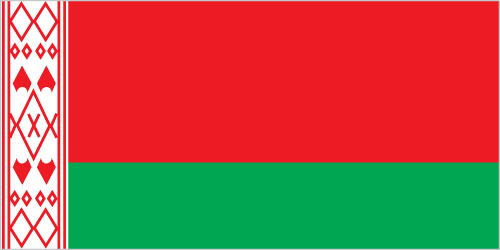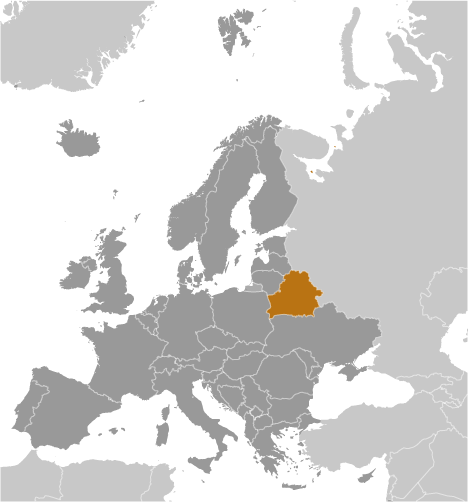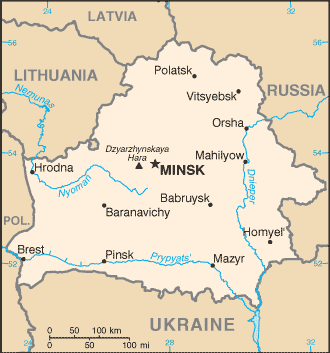|
Economy - overview:
|

|
|
As part of the former Soviet Union, Belarus had a relatively well-developed industrial base; it retained this industrial base - which is now outdated, energy inefficient, and dependent on subsidized Russian energy and preferential access to Russian markets - following the breakup of the USSR. The country also has a broad agricultural base which is inefficient and dependent on government subsidies. After an initial burst of capitalist reform from 1991-94, including privatization of state enterprises, creation of institutions of private property, and development of entrepreneurship, Belarus' economic development greatly slowed. About 80% of all industry remains in state hands, and foreign investment has been hindered by a climate hostile to business. A few banks, which had been privatized after independence, were renationalized. State banks account for 75% of the banking sector. Economic output, which had declined for several years following the collapse of the Soviet Union, revived in the mid-2000s thanks to the boom in oil prices. Belarus has only small reserves of crude oil, though it imports most of its crude oil and natural gas from Russia at prices substantially below the world market. Belarus exported refined oil products at market prices produced from Russian crude oil purchased at a steep discount. In late 2006, Russia began a process of rolling back its subsidies on oil and gas to Belarus. Tensions over Russian energy reached a peak in 2010, when Russia stopped the export of all subsidized oil to Belarus save for domestic needs. In December 2010, Russia and Belarus reached a deal to restart the export of discounted oil to Belarus. Little new foreign investment has occurred in recent years. In 2011, a financial crisis began, triggered by government directed salary hikes unsupported by commensurate productivity increases. The crisis was compounded by an increased cost in Russian energy inputs and an overvalued Belarusian ruble, and eventually led to a near three-fold devaluation of the Belarusian ruble in 2011. In November 2011, Belarus agreed to sell to Russia its remaining shares in Beltransgaz, the Belarusian natural gas pipeline operator, in exchange for reduced prices for Russian natural gas. Receiving more than half of a $3 billion loan from the Russian-dominated Eurasian Economic Community Bail-out Fund, a $1 billion loan from the Russian state-owned bank Sberbank, and the $2.5 billion sale of Beltranzgas to Russian state-owned Gazprom helped stabilize the situation in 2012; nevertheless, the Belarusian currency lost more than 60% of its value.
|
|
|
GDP (purchasing power parity):
|

|
|
$150.3 billion (2012 est.)
country comparison to the world: 62
$144.1 billion (2011 est.)
$136.8 billion (2010 est.)
note:
data are in 2012 US dollars
|
|
|
GDP (official exchange rate):
|

|
|
$58.22 billion (2012 est.)
|
|
|
GDP - real growth rate:
|

|
|
4.3% (2012 est.)
country comparison to the world: 77
5.3% (2011 est.)
7.7% (2010 est.)
|
|
|
GDP - per capita (PPP):
|

|
|
$16,000 (2012 est.)
country comparison to the world: 82
$15,300 (2011 est.)
$14,400 (2010 est.)
note:
data are in 2012 US dollars
|
|
|
GDP - composition by sector:
|

|
|
agriculture: 9.2%
industry:
46.2%
services:
44.6% (2012 est.)
|
|
|
Labor force:
|

|
|
5 million (2009)
country comparison to the world: 77
|
|
|
Labor force - by occupation:
|

|
|
agriculture: 9.4%
industry:
45.9%
services:
44.7% (2005 est.)
|
|
|
Unemployment rate:
|

|
|
1% (2009 est.)
country comparison to the world: 6
1.6% (2005)
note:
official registered unemployed; large number of underemployed workers
|
|
|
Population below poverty line:
|

|
|
27.1% (2003 est.)
|
|
|
Household income or consumption by percentage share:
|

|
|
lowest 10%: 3.8%
highest 10%:
21.9% (2008)
|
|
|
Distribution of family income - Gini index:
|

|
|
27.2 (2008)
country comparison to the world: 125
21.7 (1998)
|
|
|
Investment (gross fixed):
|

|
|
35.8% of GDP (2012 est.)
country comparison to the world: 11
|
|
|
Budget:
|

|
|
revenues: $21.42 billion
expenditures:
$22.04 billion (2012 est.)
|
|
|
Taxes and other revenues:
|

|
|
36.8% of GDP (2012 est.)
country comparison to the world: 61
|
|
|
Budget surplus (+) or deficit (-):
|

|
|
-1.1% of GDP (2012 est.)
country comparison to the world: 62
|
|
|
Public debt:
|

|
|
30% of GDP (2012 est.)
country comparison to the world: 115
52.5% of GDP (2011 est.)
|
|
|
Inflation rate (consumer prices):
|

|
|
70% (2012 est.)
country comparison to the world: 223
53.3% (2011 est.)
|
|
|
Central bank discount rate:
|

|
|
10.5% (31 December 2010 est.)
country comparison to the world: 14
13.5% (31 December 2009 est.)
|
|
|
Commercial bank prime lending rate:
|

|
|
10.5% (31 December 2012 est.)
country comparison to the world: 60
13.58% (31 December 2011 est.)
|
|
|
Stock of narrow money:
|

|
|
$5.213 billion (31 December 2012 est.)
country comparison to the world: 98
$4.211 billion (31 December 2011 est.)
|
|
|
Stock of broad money:
|

|
|
$13.32 billion (31 December 2011 est.)
country comparison to the world: 95
$16.75 billion (31 December 2010 est.)
|
|
|
Stock of domestic credit:
|

|
|
$31.34 billion (31 December 2012 est.)
country comparison to the world: 72
$25.21 billion (31 December 2011 est.)
|
|
|
Market value of publicly traded shares:
|

|
|
$NA
|
|
|
Agriculture - products:
|

|
|
grain, potatoes, vegetables, sugar beets, flax; beef, milk
|
|
|
Industries:
|

|
|
metal-cutting machine tools, tractors, trucks, earthmovers, motorcycles, televisions, synthetic fibers, fertilizer, textiles, radios, refrigerators
|
|
|
Industrial production growth rate:
|

|
|
10.5% (2010 est.)
country comparison to the world: 9
|
|
|
Current account balance:
|

|
|
-$3.067 billion (2012 est.)
country comparison to the world: 150
-$5.775 billion (2011 est.)
|
|
|
Exports:
|

|
|
$46.6 billion (2012 est.)
country comparison to the world: 62
$41.41 billion (2011 est.)
|
|
|
Exports - commodities:
|

|
|
machinery and equipment, mineral products, chemicals, metals, textiles, foodstuffs
|
|
|
Exports - partners:
|

|
|
Russia 33.5%, Netherlands 15.1%, Ukraine 10.2%, Latvia 7.7%, Germany 4.5% (2011)
|
|
|
Imports:
|

|
|
$48.18 billion (2012 est.)
country comparison to the world: 55
$45.13 billion (2011 est.)
|
|
|
Imports - commodities:
|

|
|
mineral products, machinery and equipment, chemicals, foodstuffs, metals
|
|
|
Imports - partners:
|

|
|
Russia 54.4%, Germany 5.6%, China 4.8%, Ukraine 4.4% (2011)
|
|
|
Reserves of foreign exchange and gold:
|

|
|
$5.624 billion (31 December 2012 est.)
country comparison to the world: 86
$6.011 billion (31 December 2011 est.)
|
|
|
Debt - external:
|

|
|
$1.067 billion (31 December 2012 est.)
country comparison to the world: 155
$1.079 billion (31 December 2011 est.)
|
|
|
Exchange rates:
|

|
|
Belarusian rubles (BYB/BYR) per US dollar -
8,307.1 (2012 est.)
4,974.6 (2011 est.)
2,978.5 (2010 est.)
2,789.49 (2009)
2,130 (2008)
|
|
|
Fiscal year:
|

|
|
calendar year
|
|
|
|





 )
)



